PCL Healthcare at Orthotics Plus
A Rebound PCL is a type of knee brace available at Orthotics Plus Melbourne.
It is characterised by its suitability for postoperative and conservative management of Posterior Cruciate Ligaments (PCL) injuries of the knee. The Rebound PCL reduces tension on a healing PCL, potentially resulting in a more stable and more functional knee.
The PCL is located at the rear of the knee and combines with the ACL to stabilise the knee from forwards/backwards forces.
Orthotics Plus offers the Rebound PCL in conjunction with knee assessments, treatments and ongoing support.
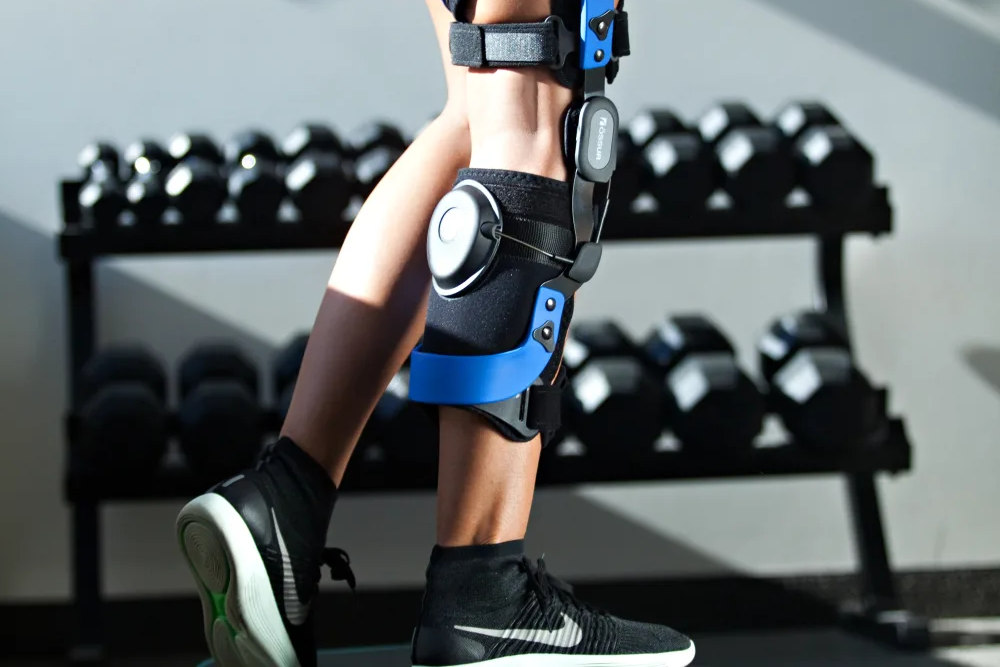
How Does A Rebound PCL Brace Work?
We strongly recommend engaging an orthopaedic surgeon or specialist knee physio to assist with the rehab of a PCL injury. Orthotics Plus is happy to suggest clinicians we feel manage this condition well.
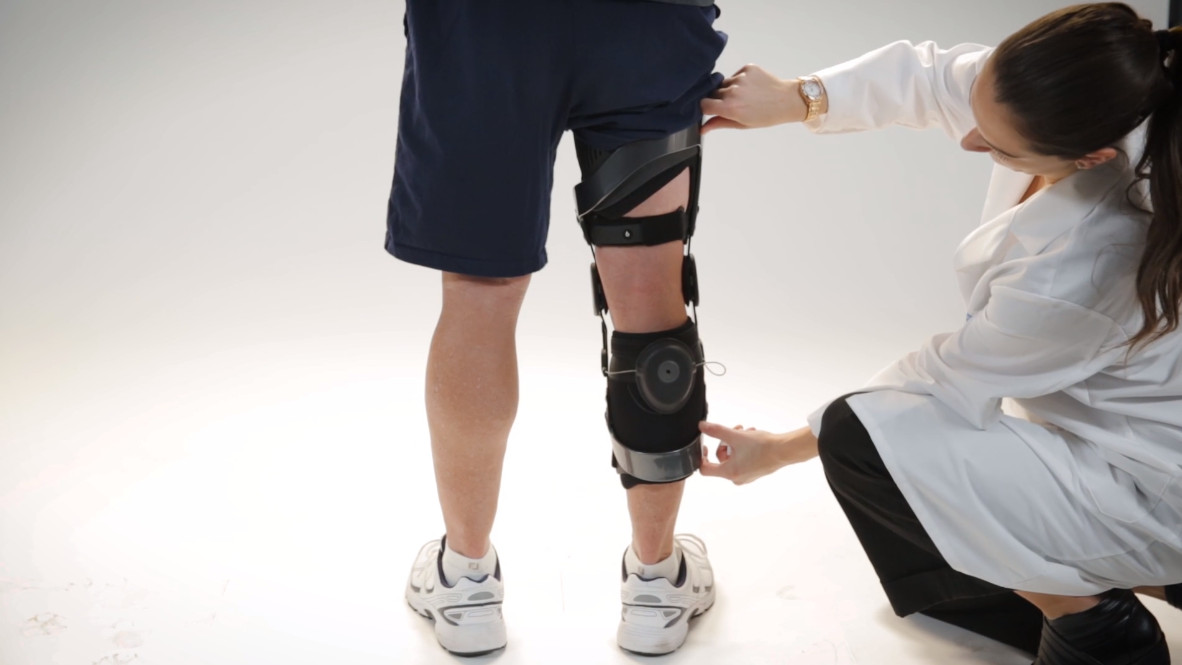 Anatomically, the brace will apply an anteriorly directed force on the tibia which increases as the knee flexes, taking load off the PCL (or PCL graft) while it’s healing.
Anatomically, the brace will apply an anteriorly directed force on the tibia which increases as the knee flexes, taking load off the PCL (or PCL graft) while it’s healing.
The brace prevents posterior translation of the tibia in relation to the femur, as well as some rotational force.
As the knee bends, there is an increased force on the PCL, the brace uses a ratchet system that applies a counteractive force proportional to the angle of flexion.
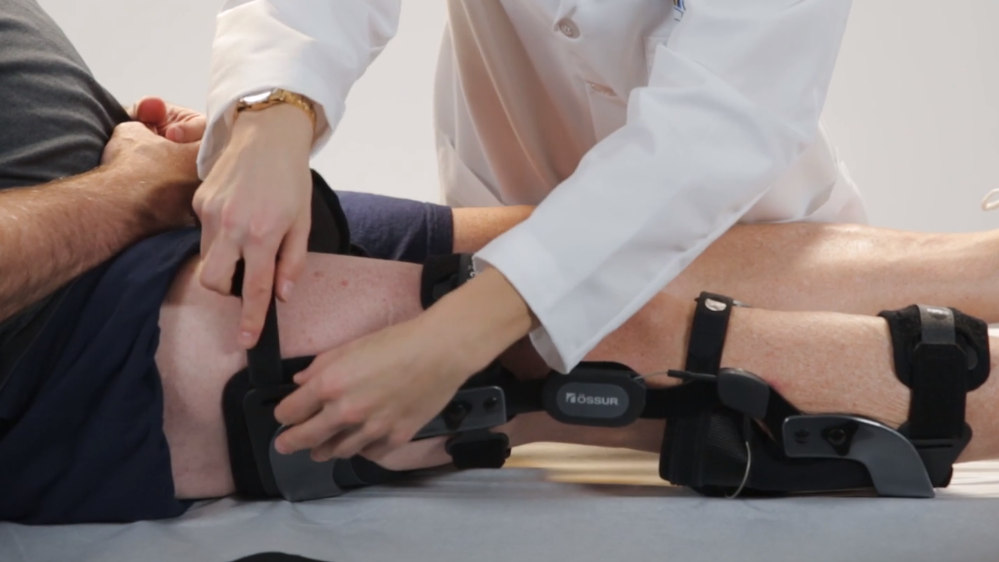 During approx 90-100 degrees of knee flexion the Rebound PCL will be applying the most amount of support via the anteriorly directed force.
During approx 90-100 degrees of knee flexion the Rebound PCL will be applying the most amount of support via the anteriorly directed force.
Our aim is to create an environment in the knee where the PCL can heal in a tight position, resulting in increased knee stability.
 The maximum force a Rebound PCL delivers is approx 7 kilograms, however, this value changes patient to patient.
The maximum force a Rebound PCL delivers is approx 7 kilograms, however, this value changes patient to patient.
Orthotics Plus can also customise range of motion locks on the Rebound PCL, which may be requested by your surgeon to slowly introduce movement.
Unlike the ACL, the PCL can heal conservatively and often does not require surgery. It is possible for a patient to rehabilitate with or without a knee brace.
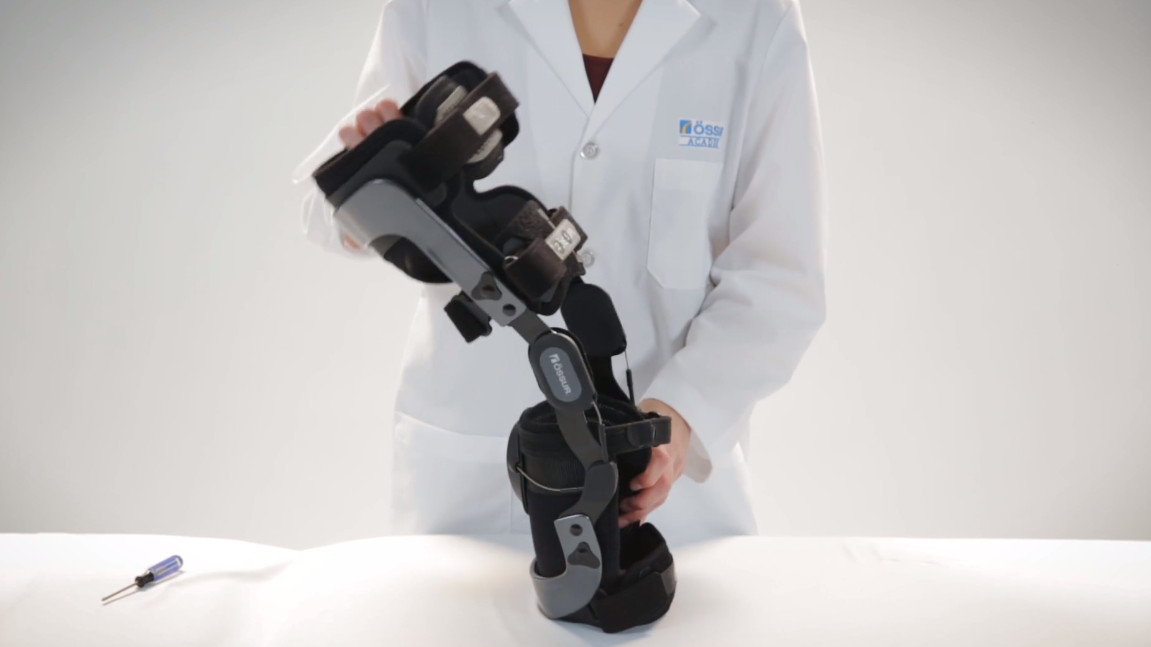 A risk of PCL injuries is the hamstrings/leg positioning can place load on the healing PCL.
A risk of PCL injuries is the hamstrings/leg positioning can place load on the healing PCL.
This means that the PCL can be lengthened, as well as the healing period extended and the knee becomes less stable due to the lengthened PCL.
This risk can be mitigated through conservative strategies, such as the use of a Rebound PCL, preventing certain movements and avoiding certain exercises.
Prescription of a Rebound PCL
The use of knee braces in general can be to address acute and chronic conditions.
The Rebound PCLs is commonly used for postoperative and conservative management of all grades of PCL injuries.
What does a normal PCL do in my knee?
To understand how the Rebound PCL works it is helpful to understand how a healthy PCL functions in a healthy knee.
To greatly simplify: a normal PCL prevents posterior translation of the tibia in relation to the femur. The PCL is fairly relaxed during normal standing but undergoes increased strain as the knee bends.
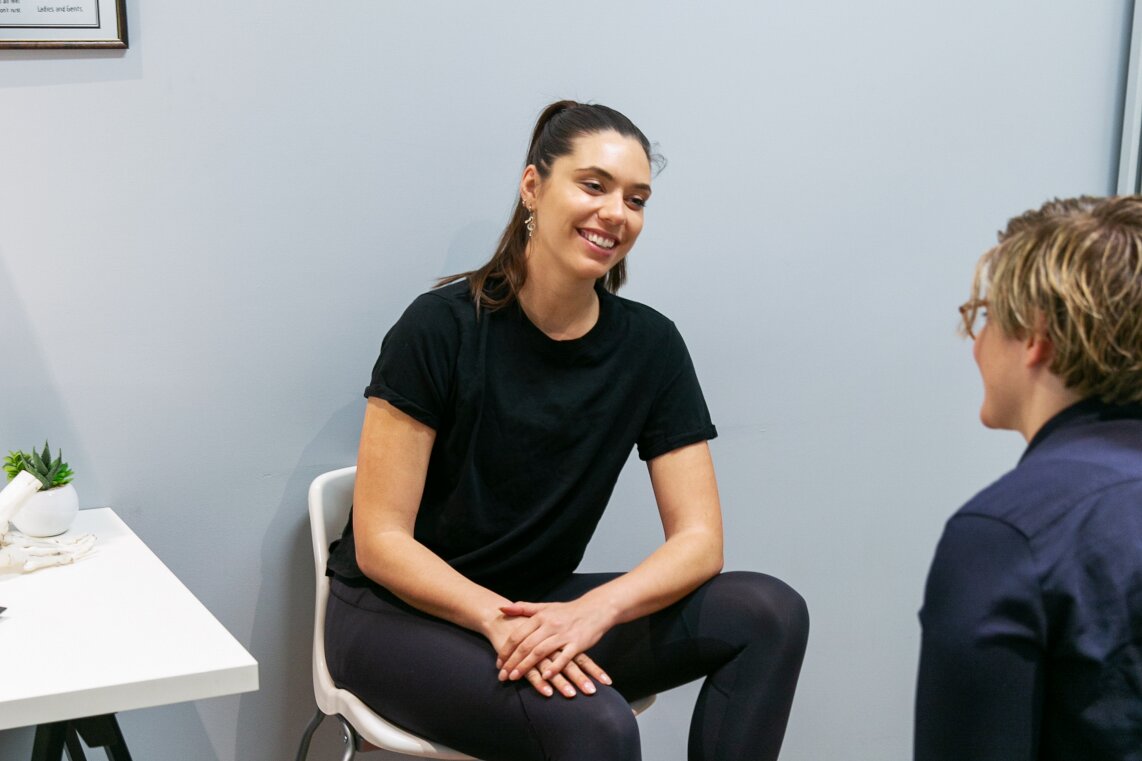
PCL Referrals at Orthotics Plus
We receive referrals from surgeons, GPs, sports doctors and individuals.
We perform knee assessments, fitting and ongoing care in PCL rehabilitation cases. As such, we may recommend the use of a Rebound PCL.
When receiving referrals from medical partners, we are able to organise a Rebound PCL in advance for use on the day. The patient may need as little as one appointment, which is to be confirmed.
Our Orthotists will adjust the dynamic force values to ensure the patient is comfortable and well-supported.
We will also educate the patient on wear schedules, return appointments and practical information. At Orthotics Plus, we strive to offer compassion, care and clinical excellence.
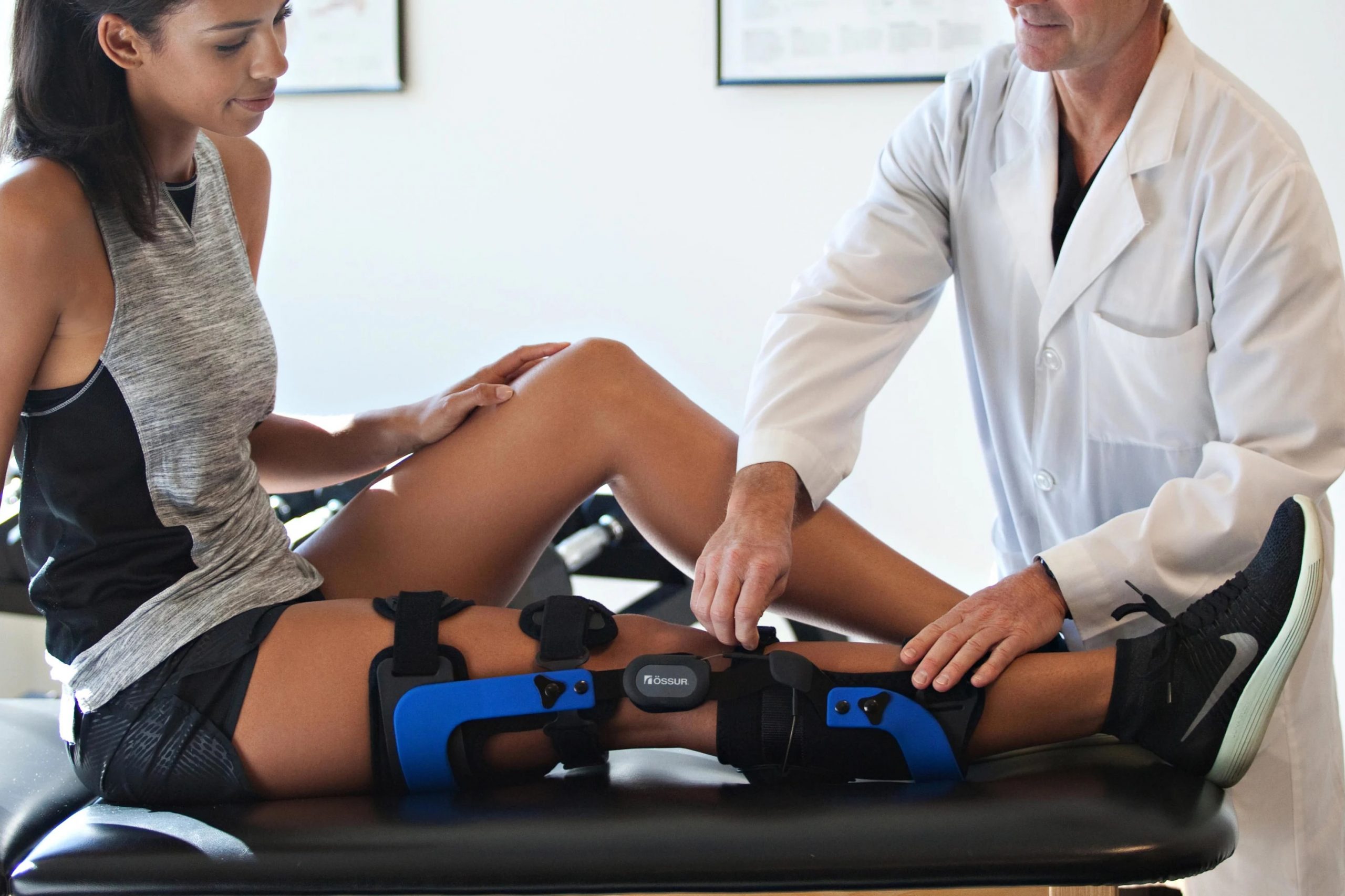
Rebound PCL FAQ
There is evidence to show that it reduces PCL sag in a healing PCL population.
There are also biomechanical studies to show that the brace reduces compressive force at the patellofemoral joint.
When the tibia is translated posteriorly in relation to the femur due to a ruptured PCL, the quadriceps adopt the role of the PCL and increases load at the patellofemoral joint.
Additionally, the quadriceps tendon must deviate posteriorly so it runs in less of a straight line, which increases patellofemoral compressive force.
If we can induce a more stable knee due to a more stable PCL it is possible the patient will haveless compressive force at the kneecap, and a patient can possibly reduce the risk of patellofemoral osteoarthritis or pain, although this hasn’t been studied long term.
These Orthoses have very different indications.
A KAFO might be used to address overall lower limb weakness.
Whereas the Rebound PCL is primarily used for acute and post-operative management of a PCL rupture or partial rupture.
The Rebound PCL has shear-knobs to alter various tensions. In most cases, the patient is not required to adjust any settings ever.
The exceptions to this would be if we’re providing specific instructions, which can be considered for patients who cannot access our clinics (for example, patients living in rural areas).
A home-visiting Physiotherapist may be able to assist in this case.
The tension of the device is highly specific to the patient’s assessment, injury type and anthropomorphics.
Yes.
Your warranty for the Rebound PCL lasts for the length of treatment.
If the brace breaks during the length of treatment, it will be replaced at no cost.
The product is made by the Orthopedic company Össur and was developed in collaboration with an orthopedic surgeon, Robert LaPrade.
Orthotics Plus believe it to be exceptionally high quality and fit for purpose, which is why we include it in our range.